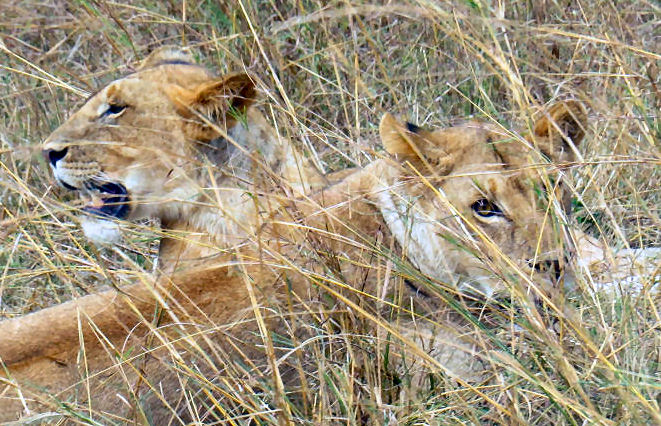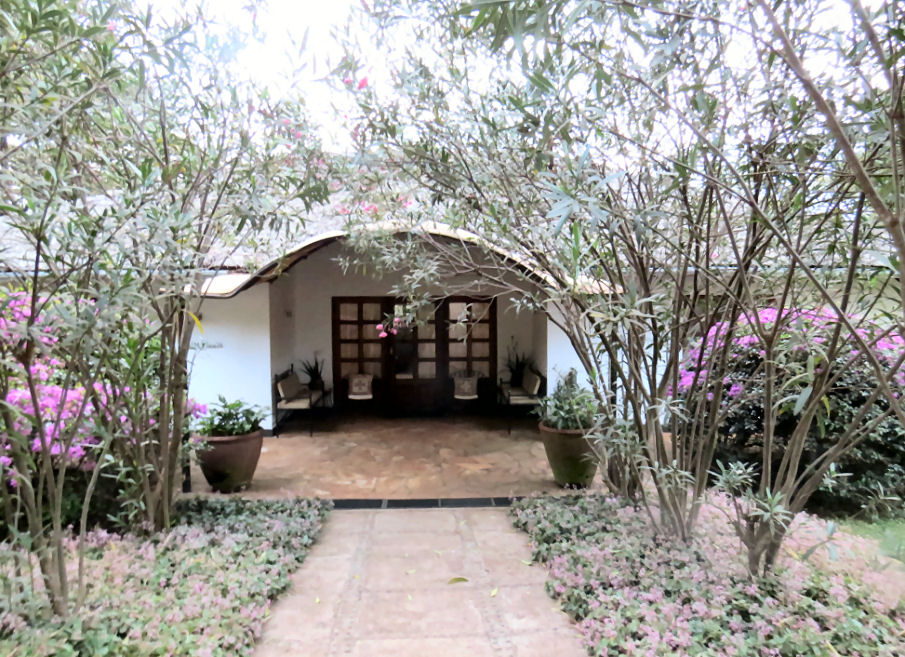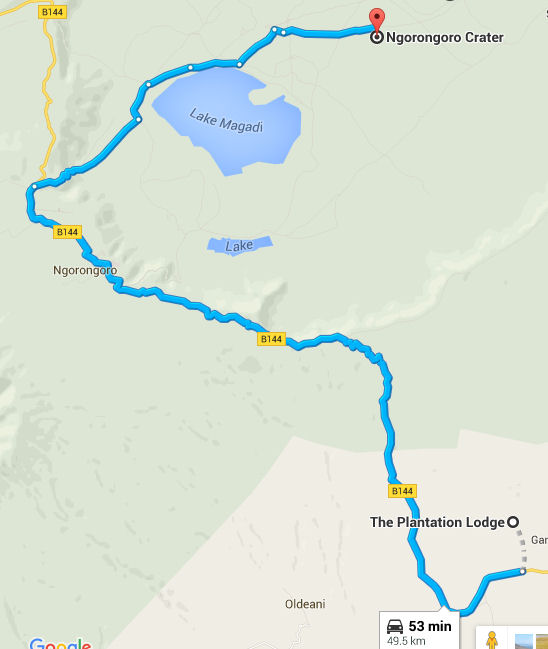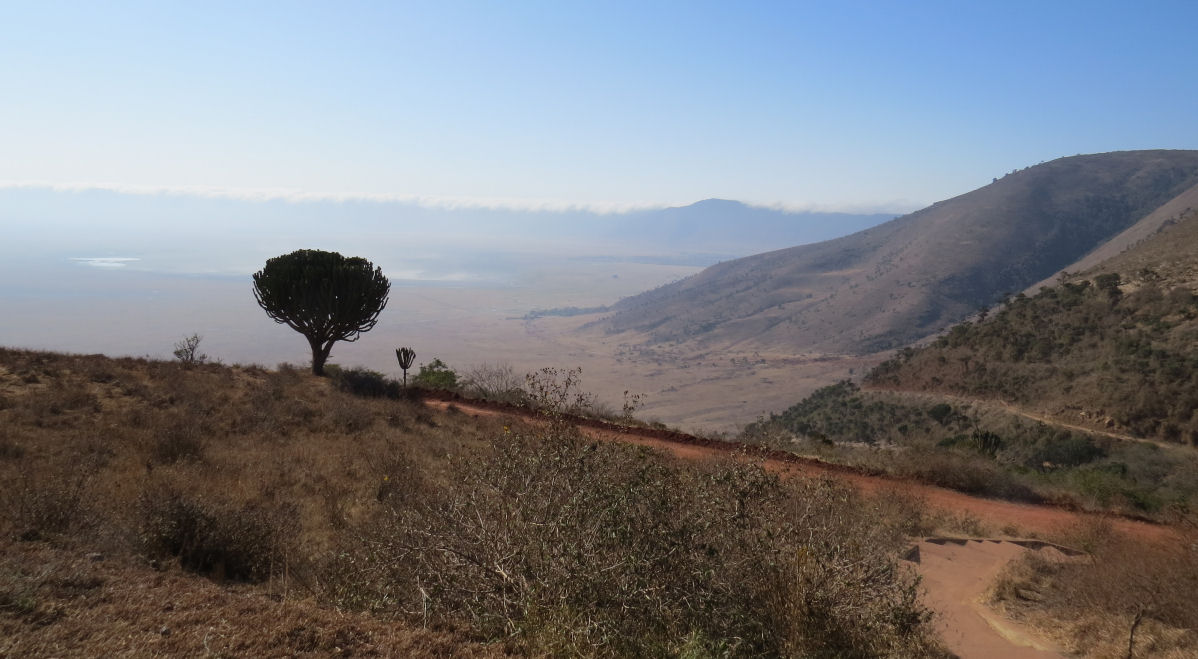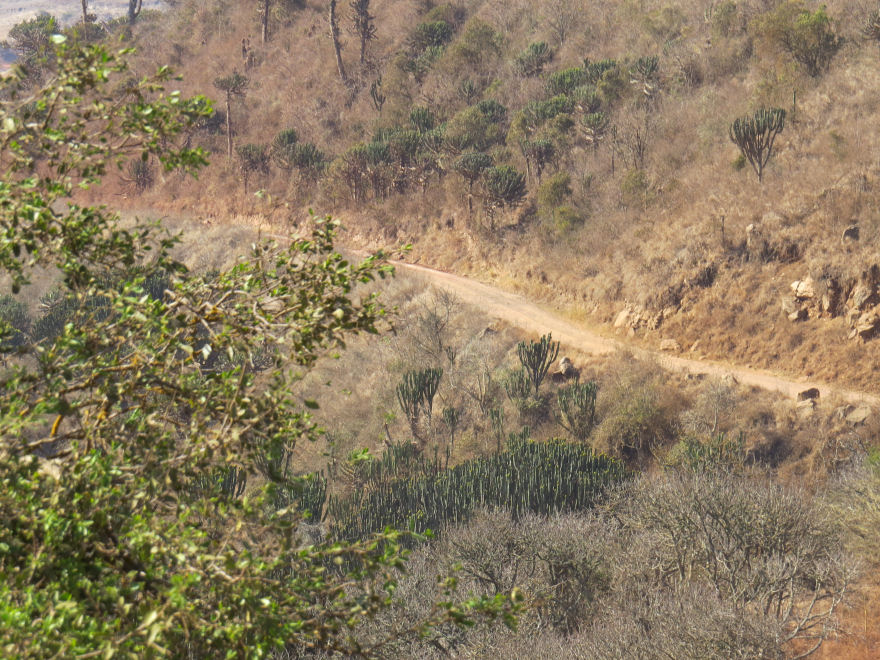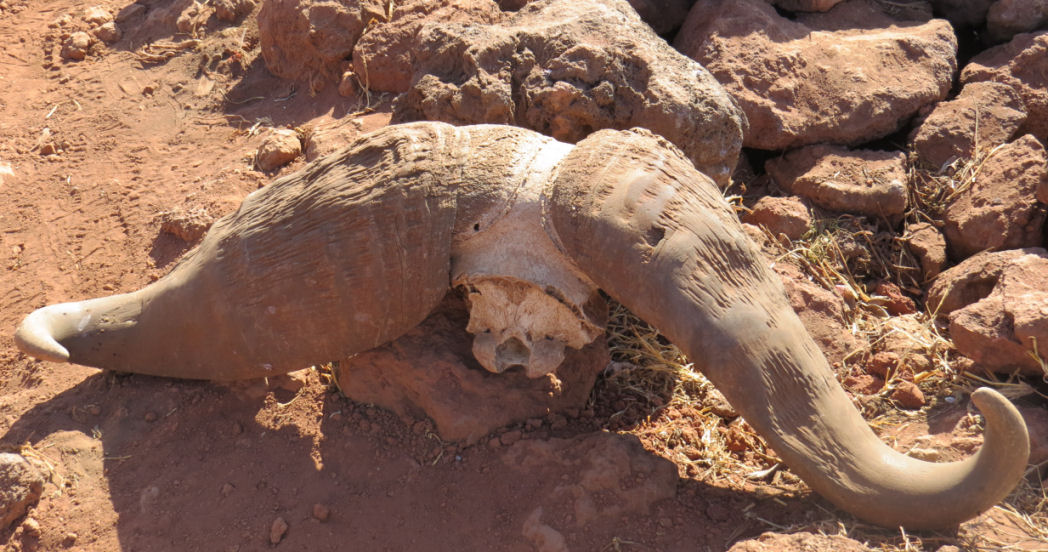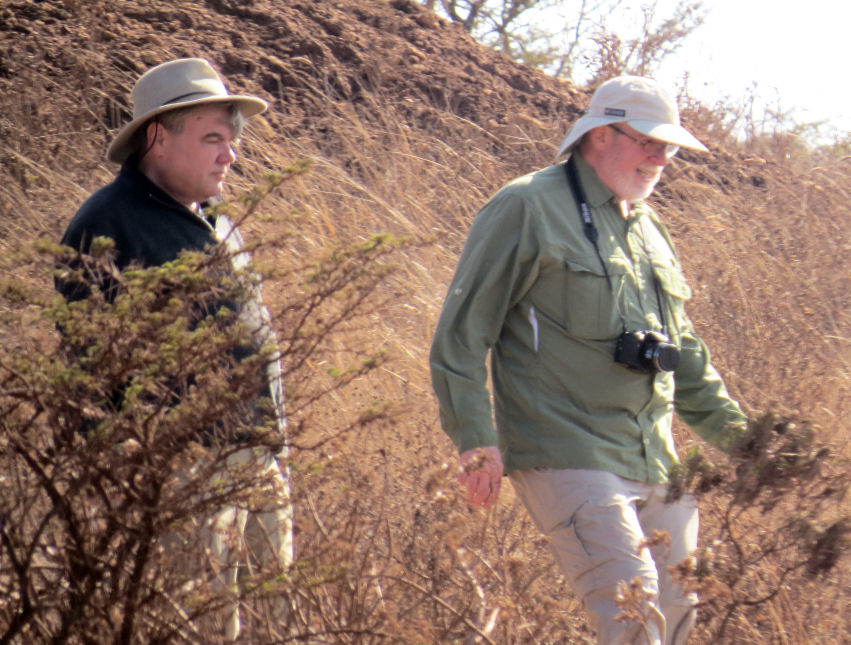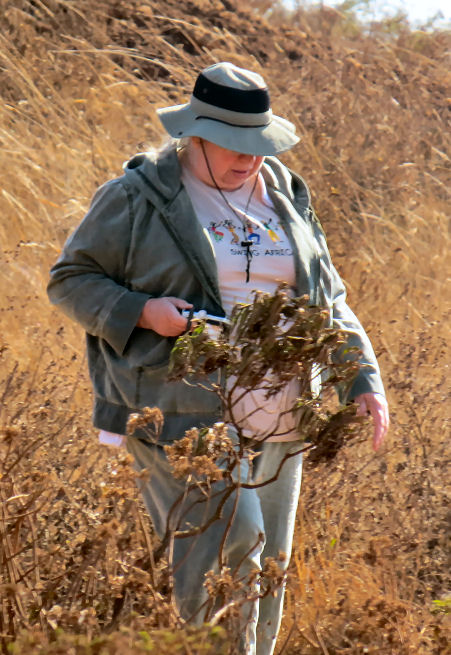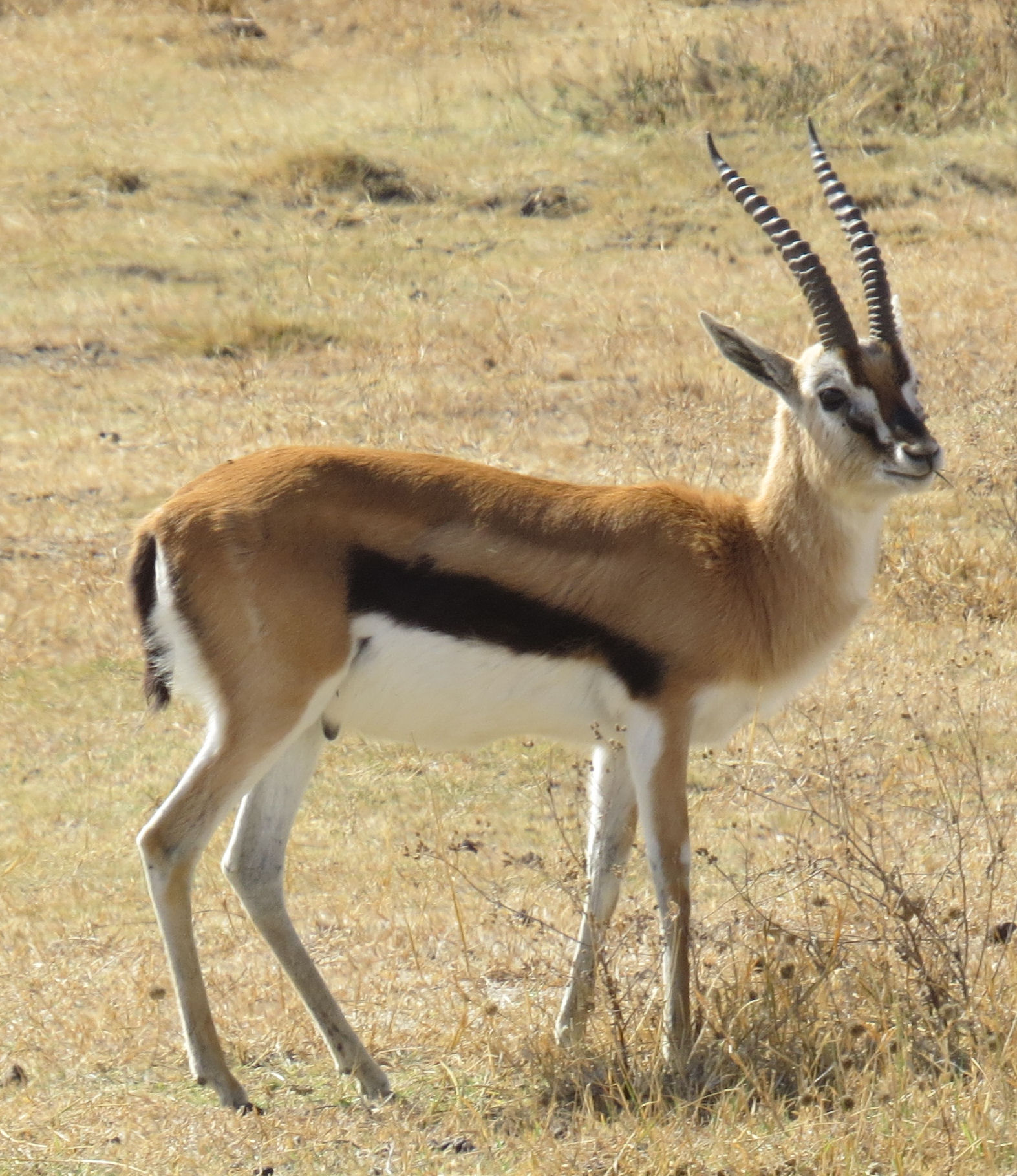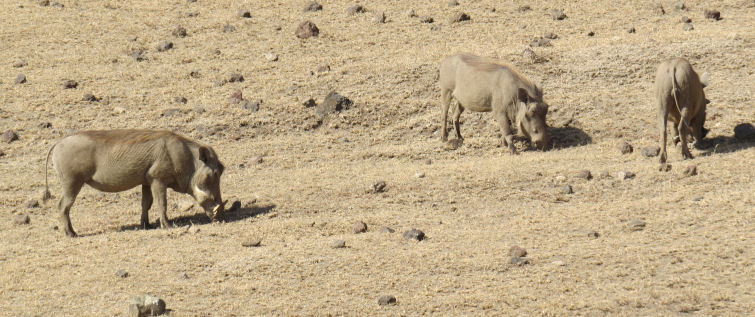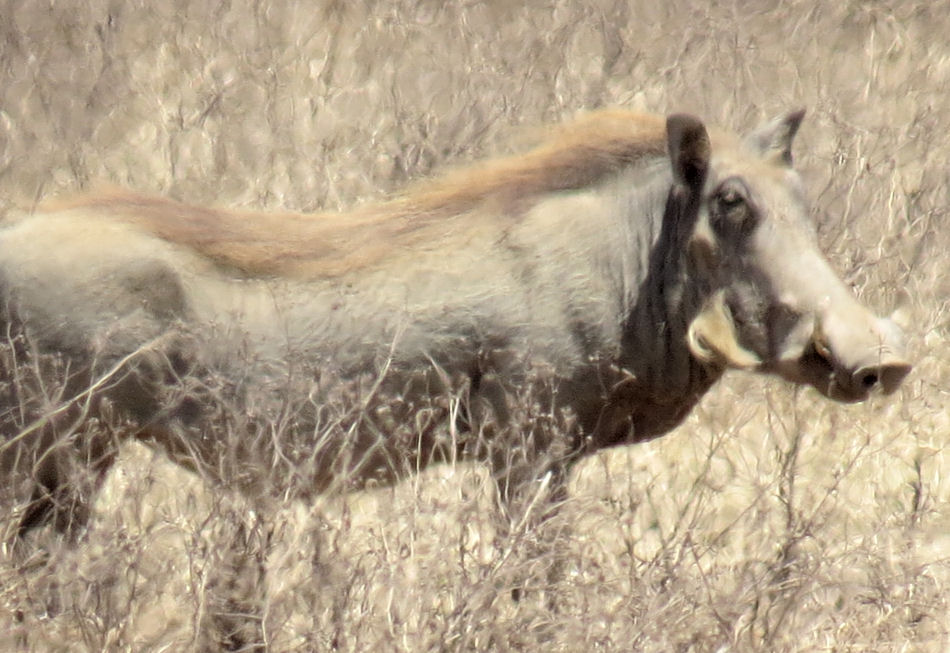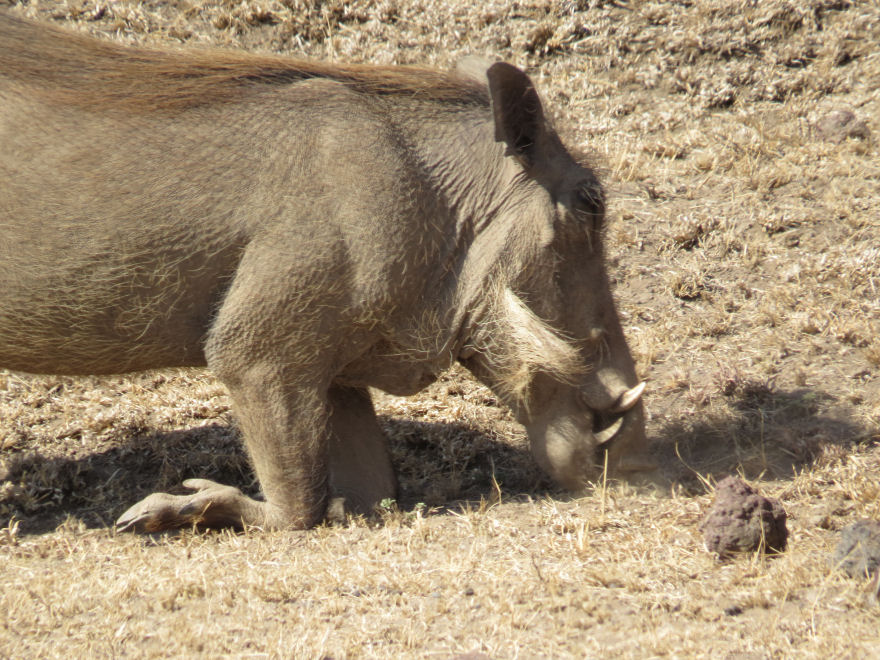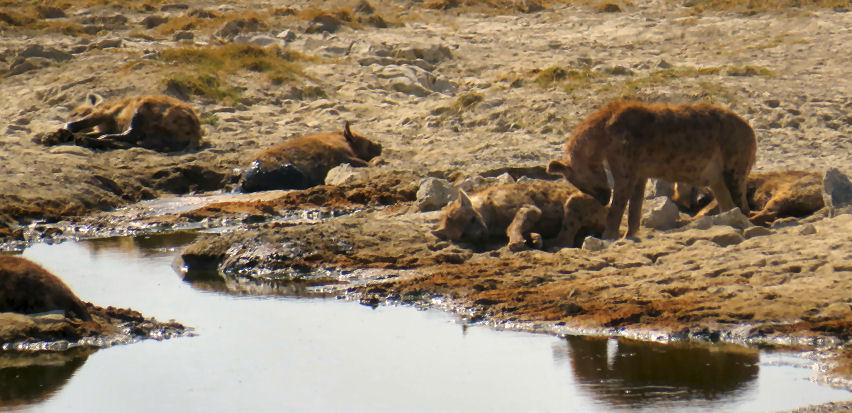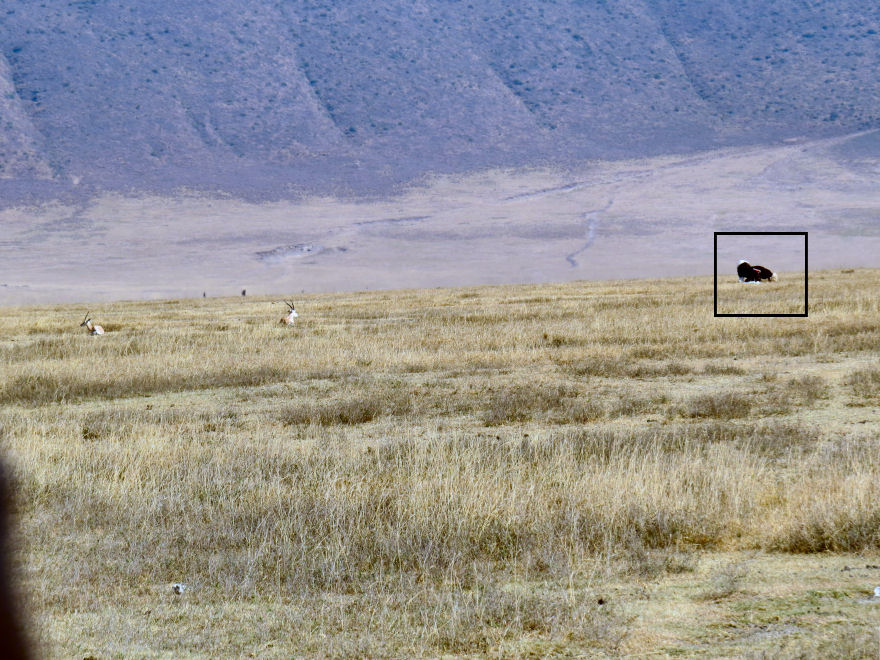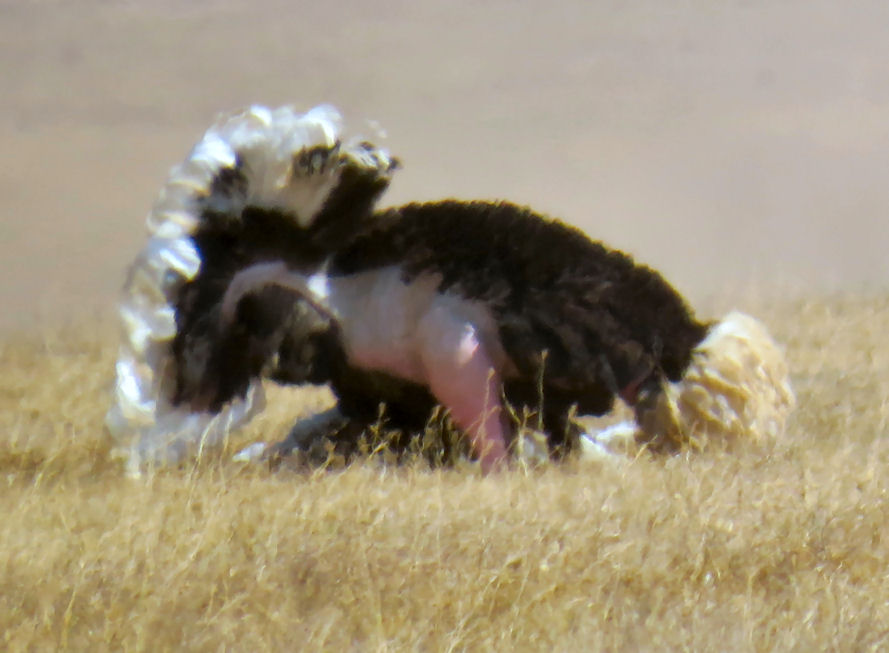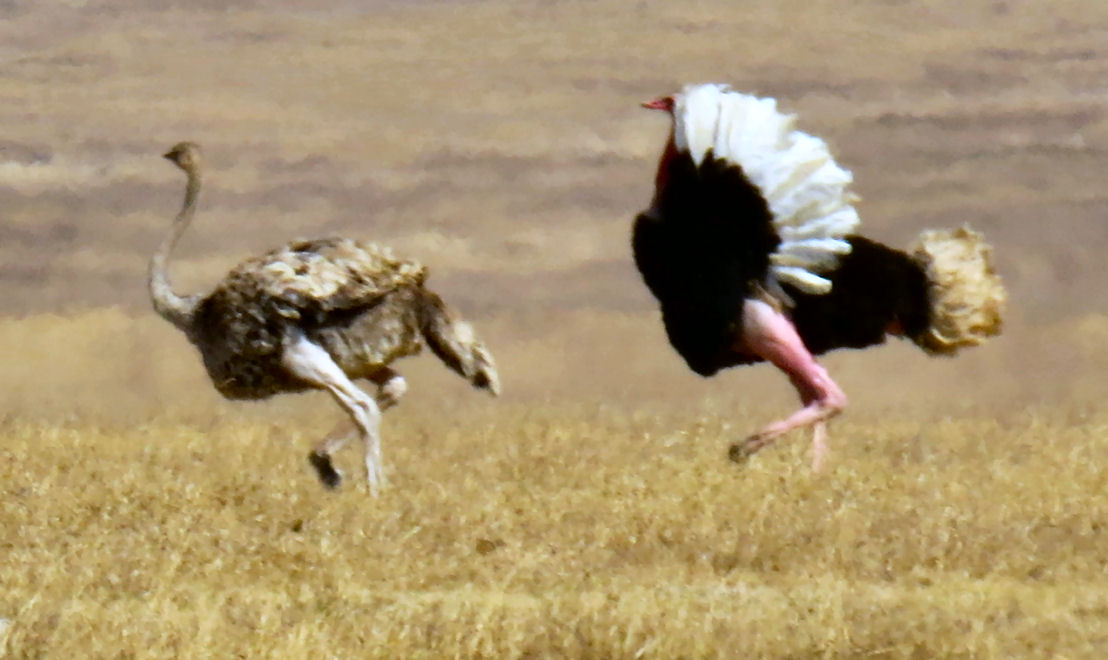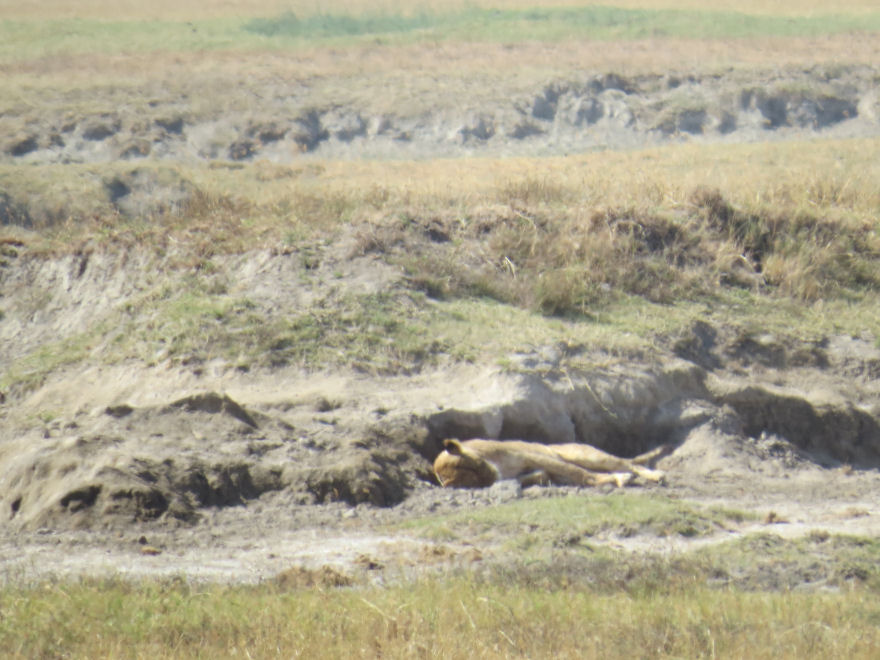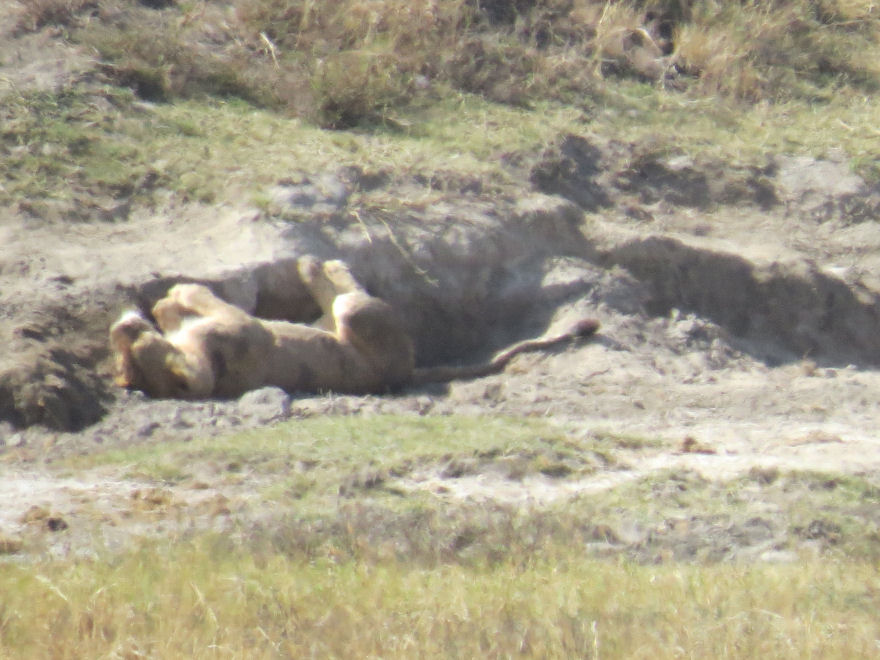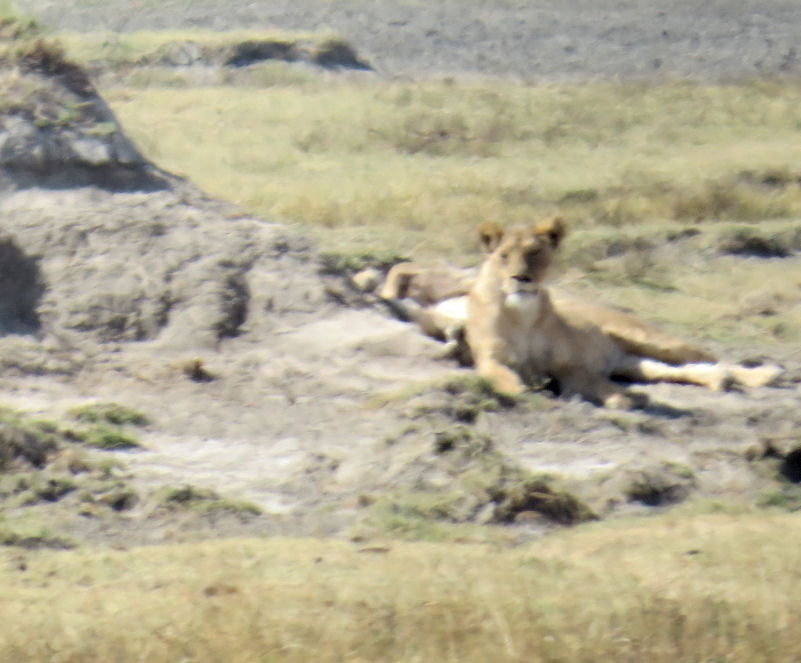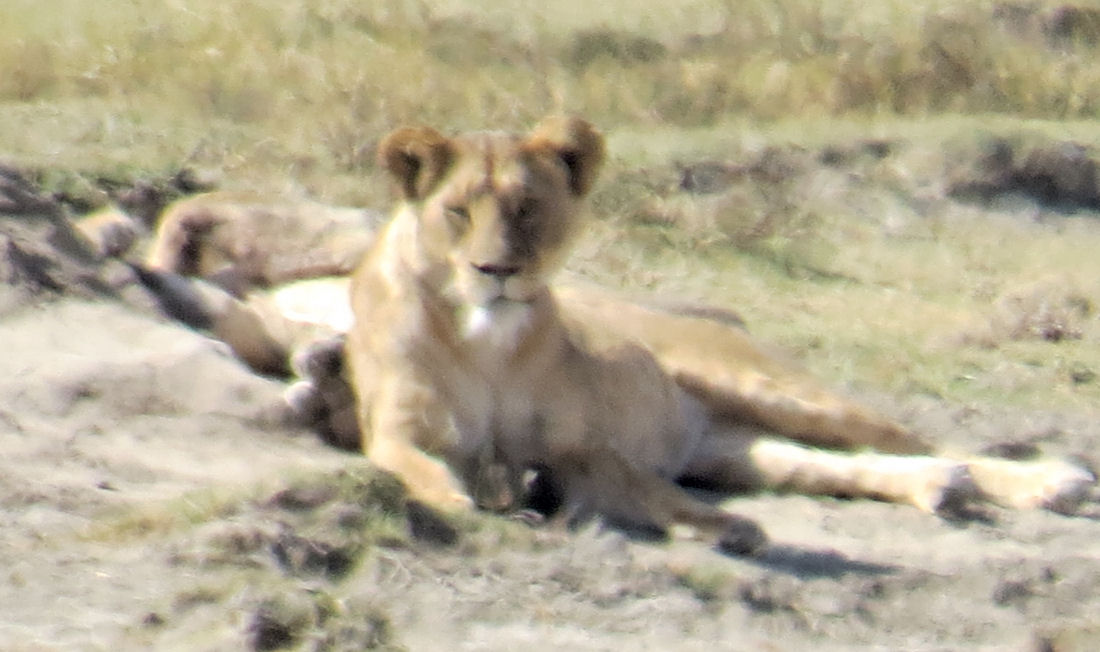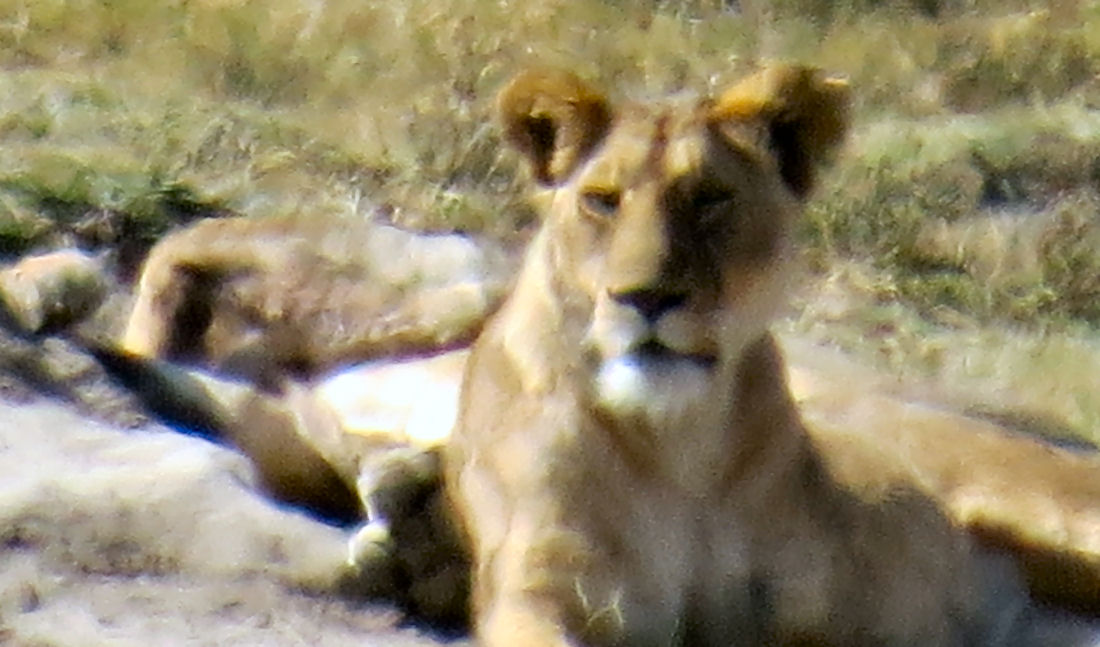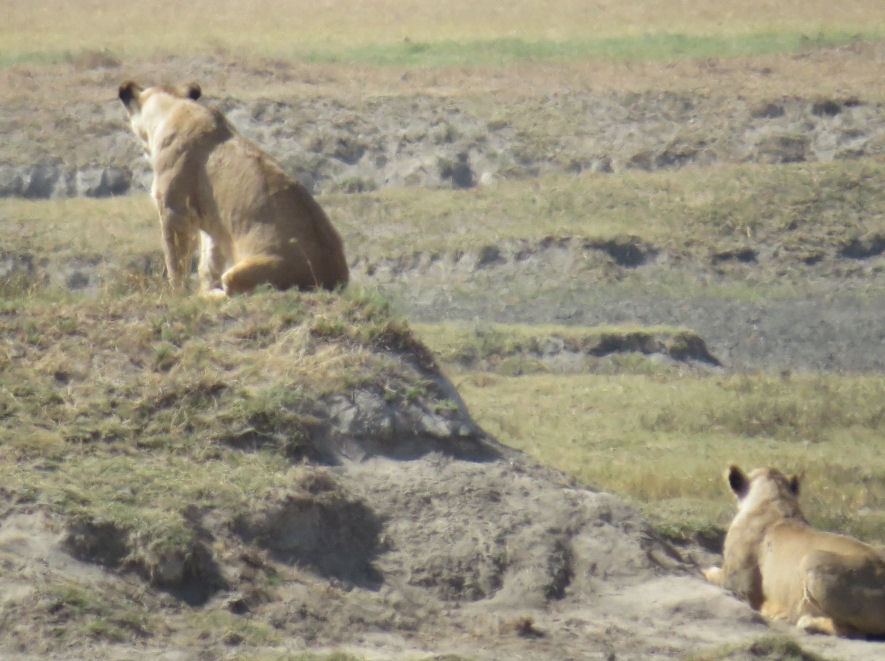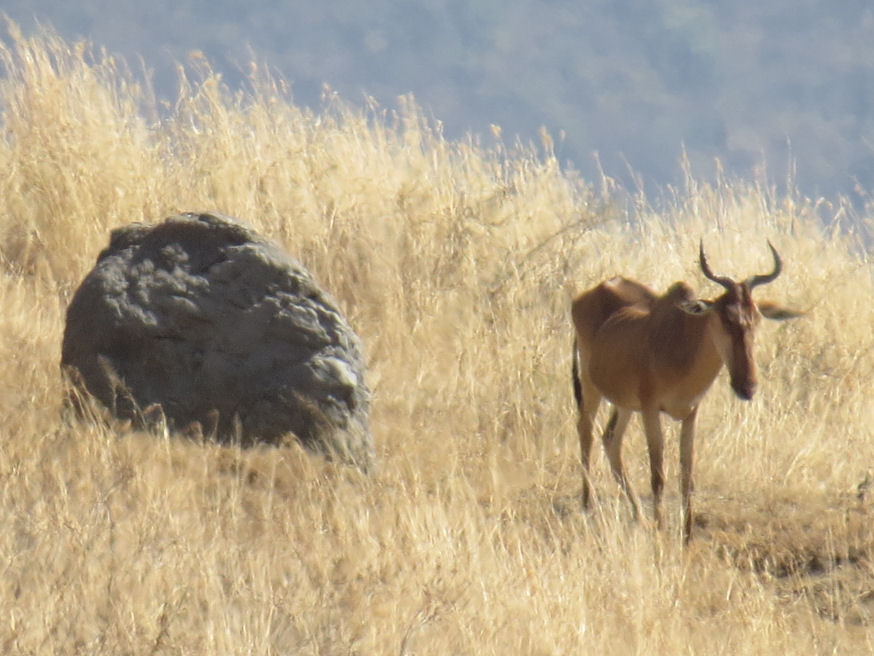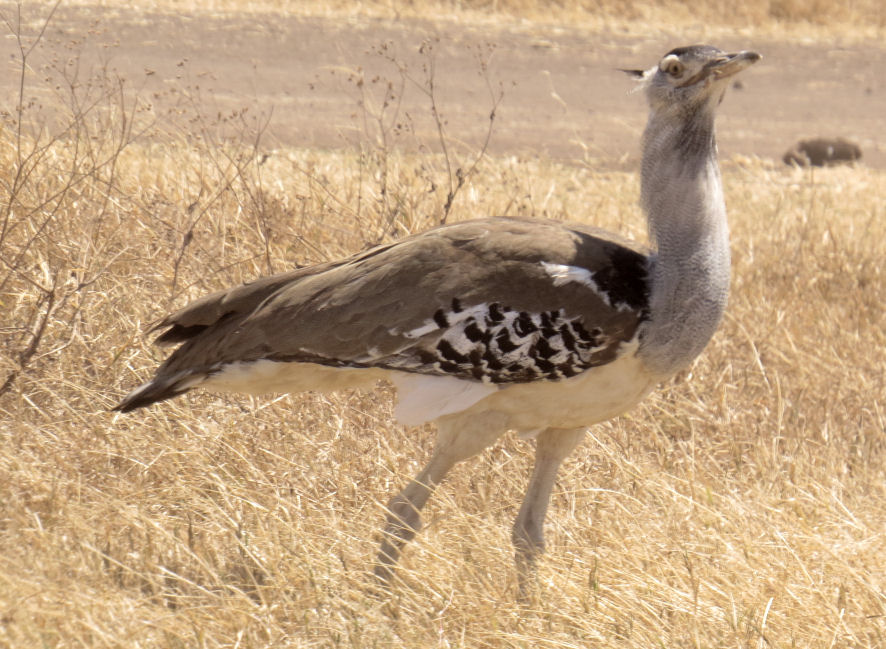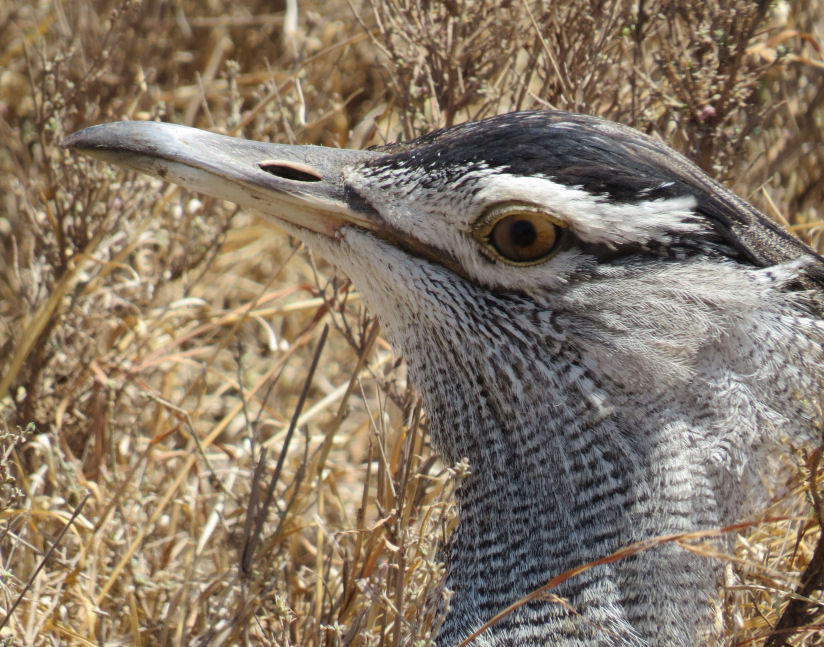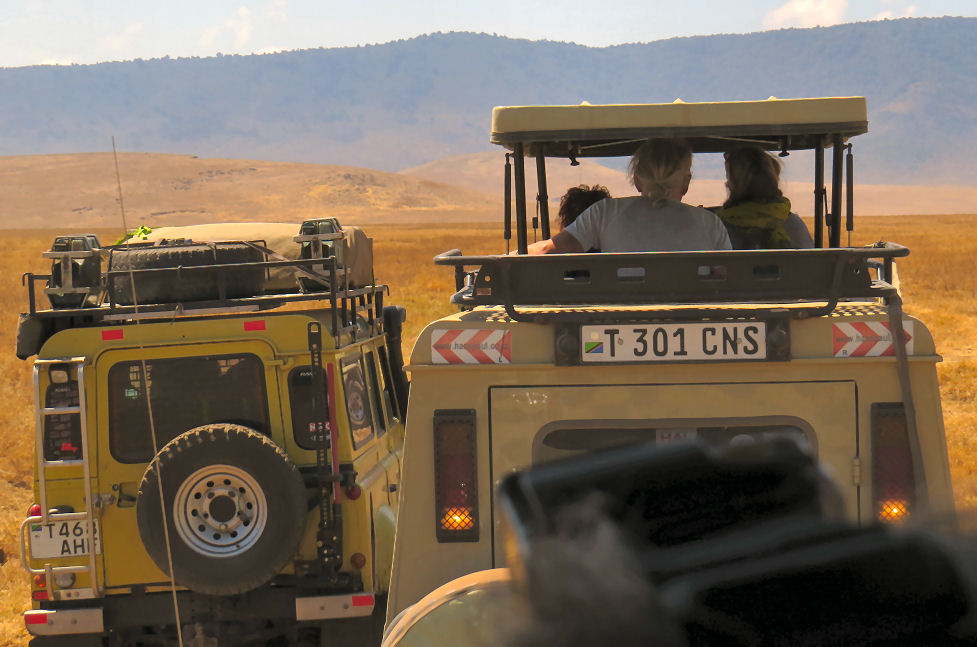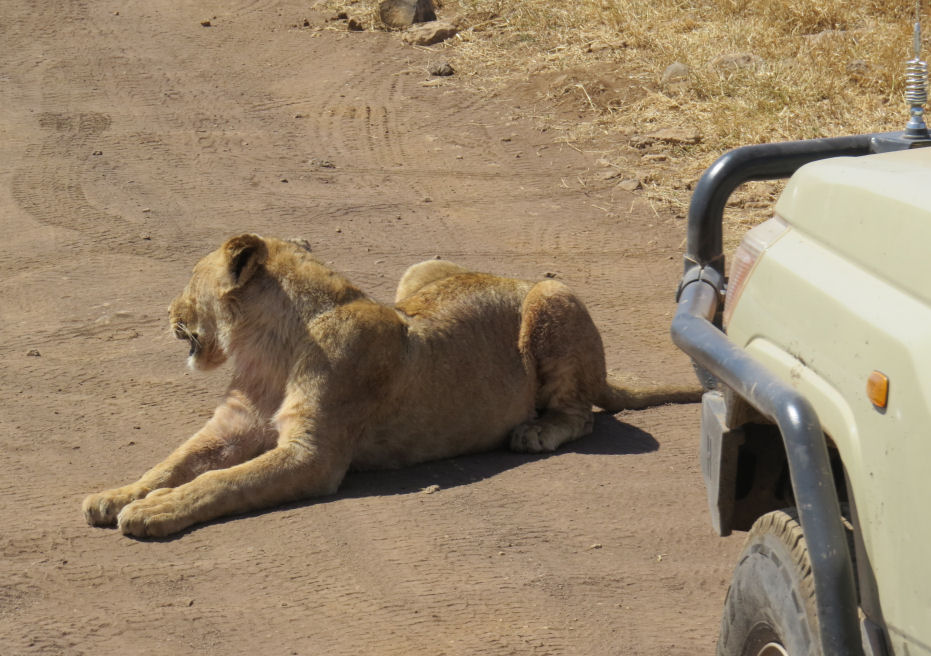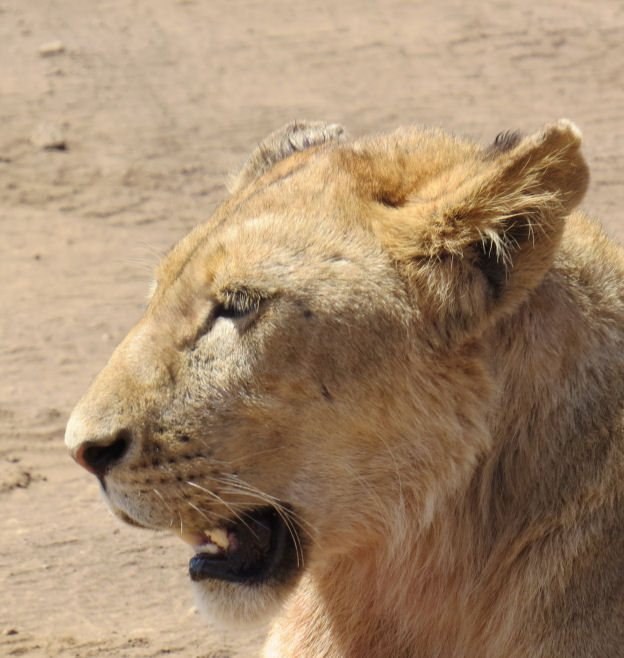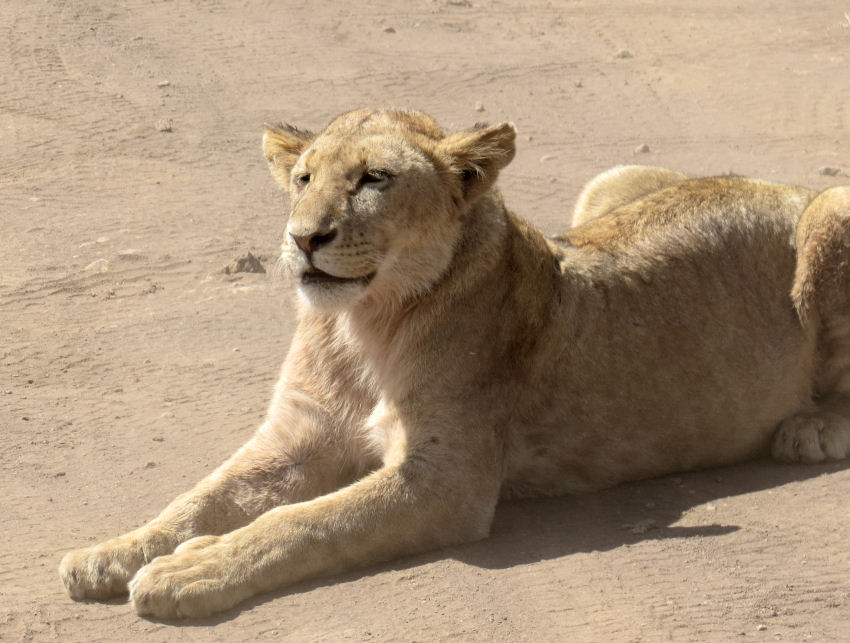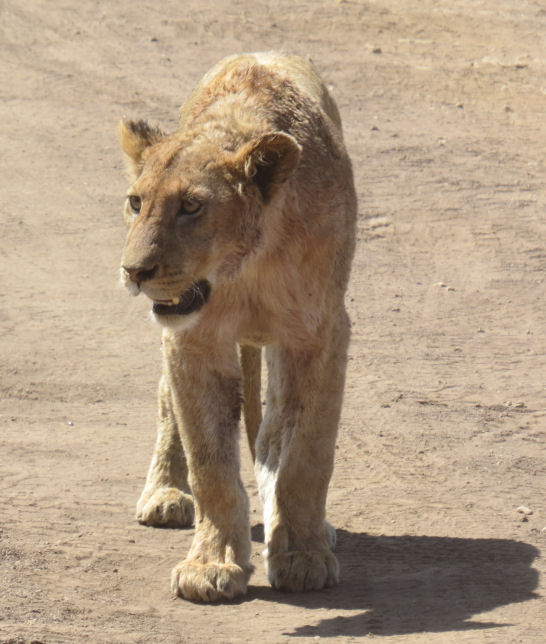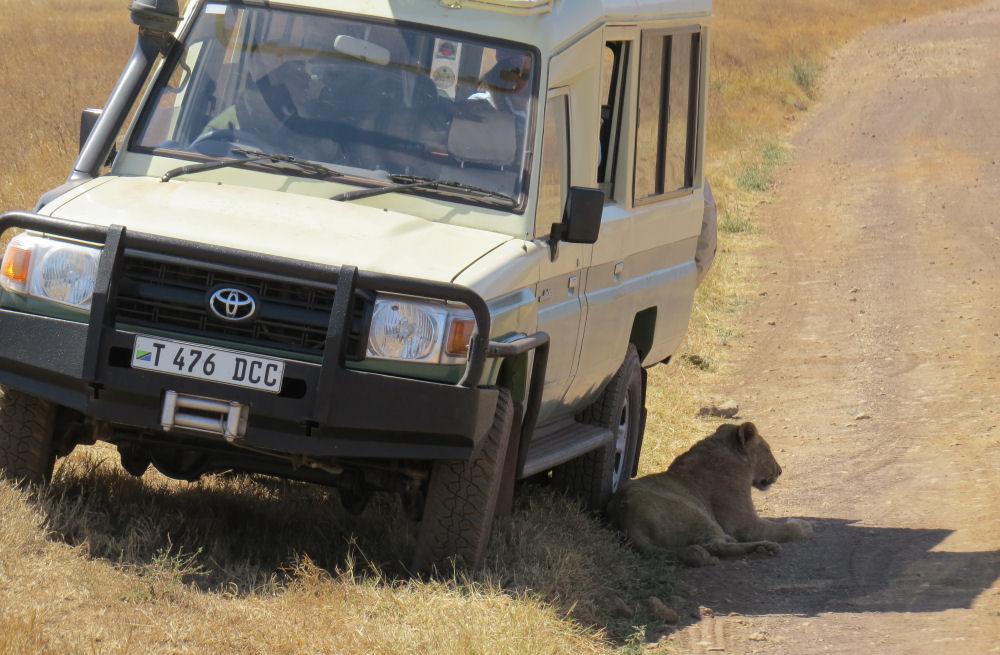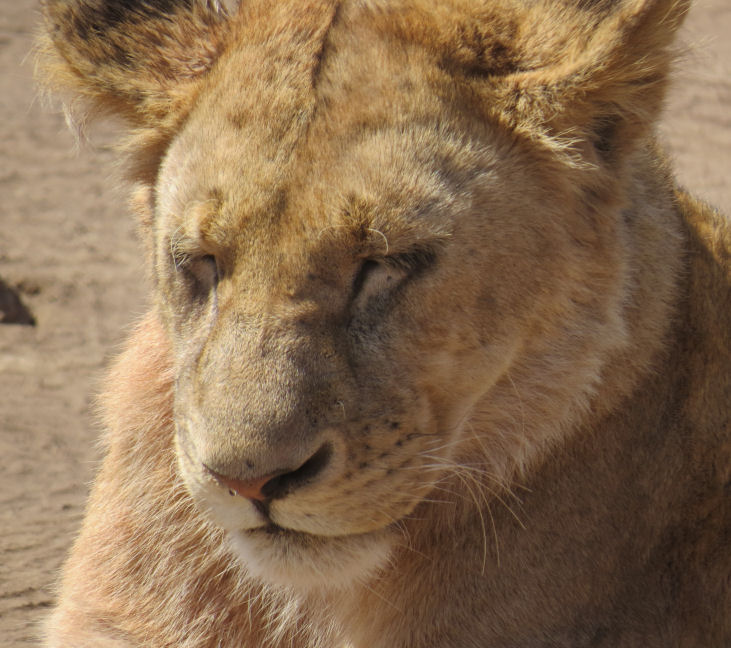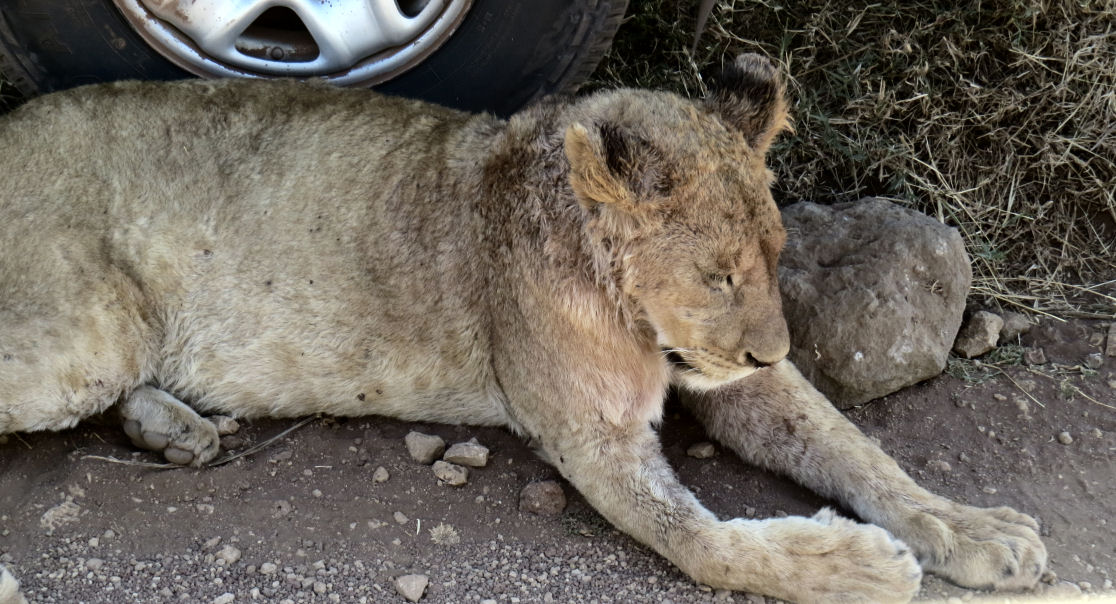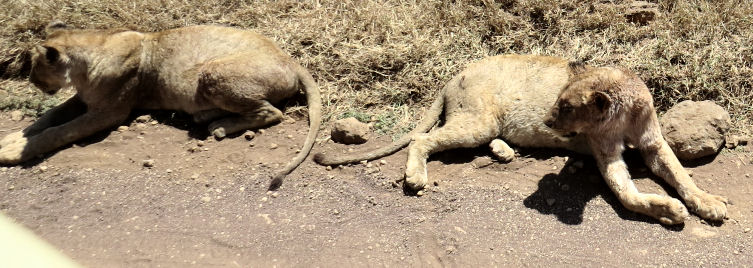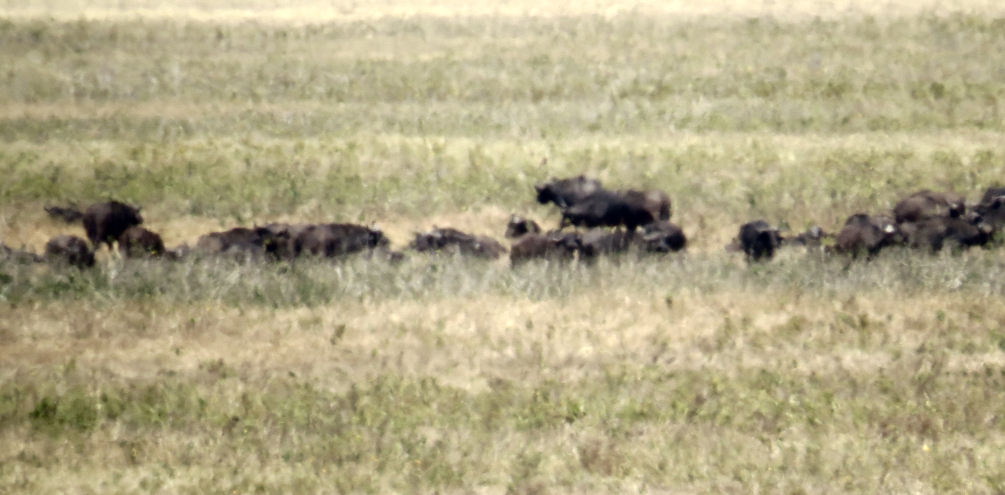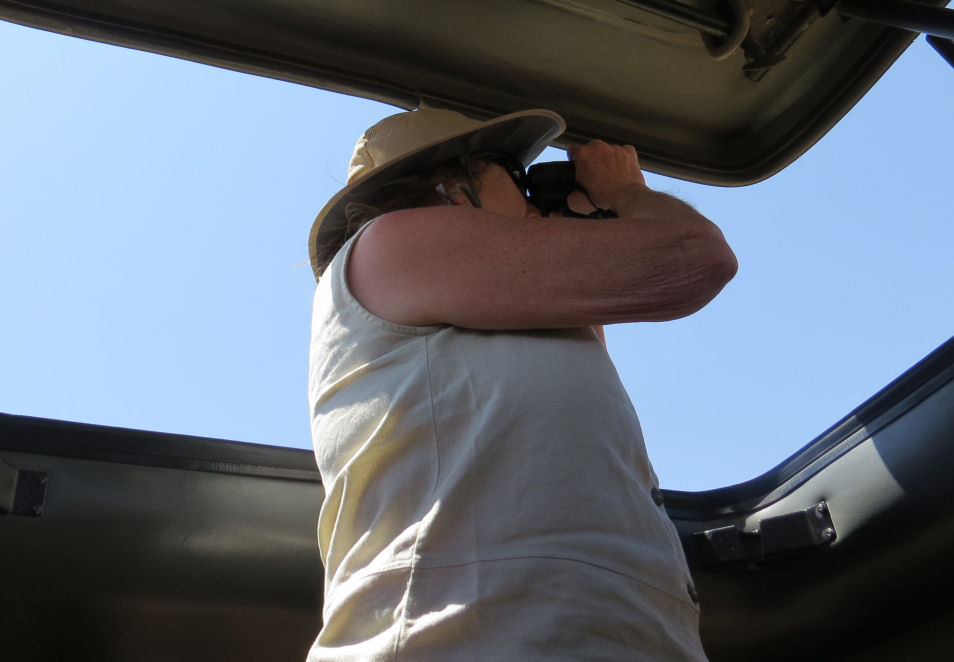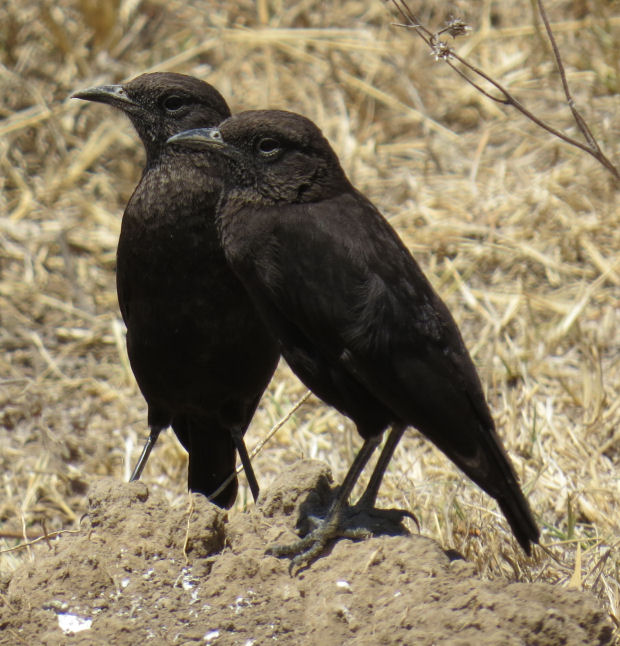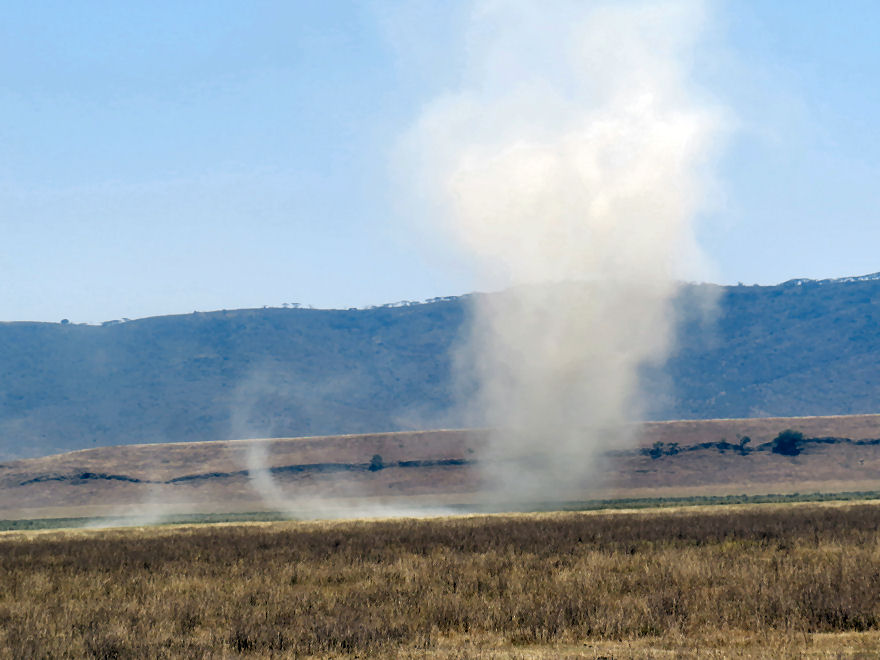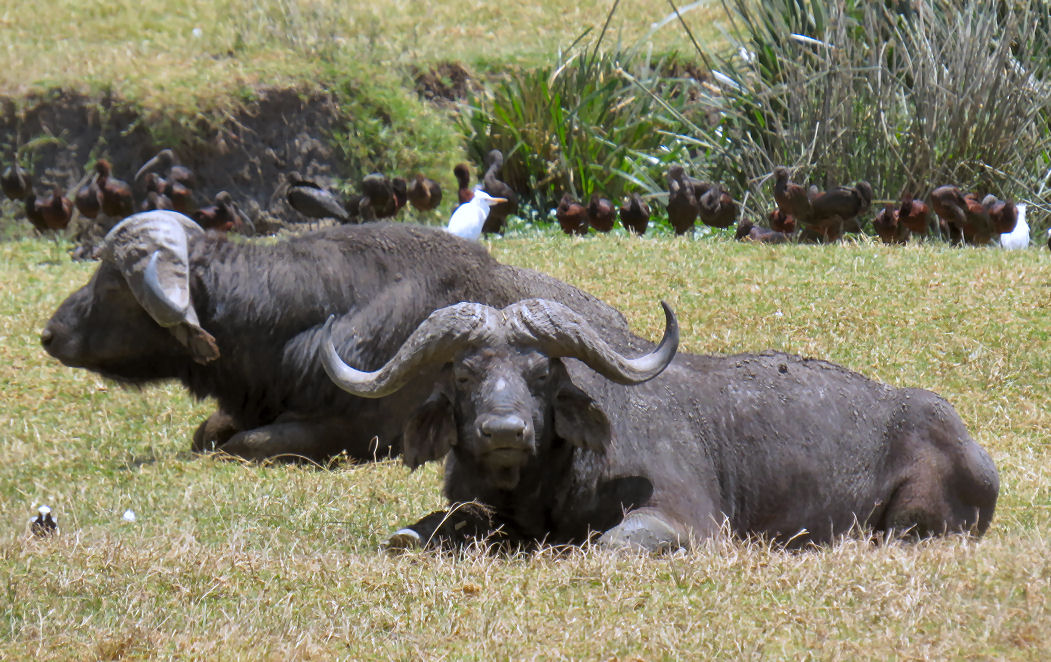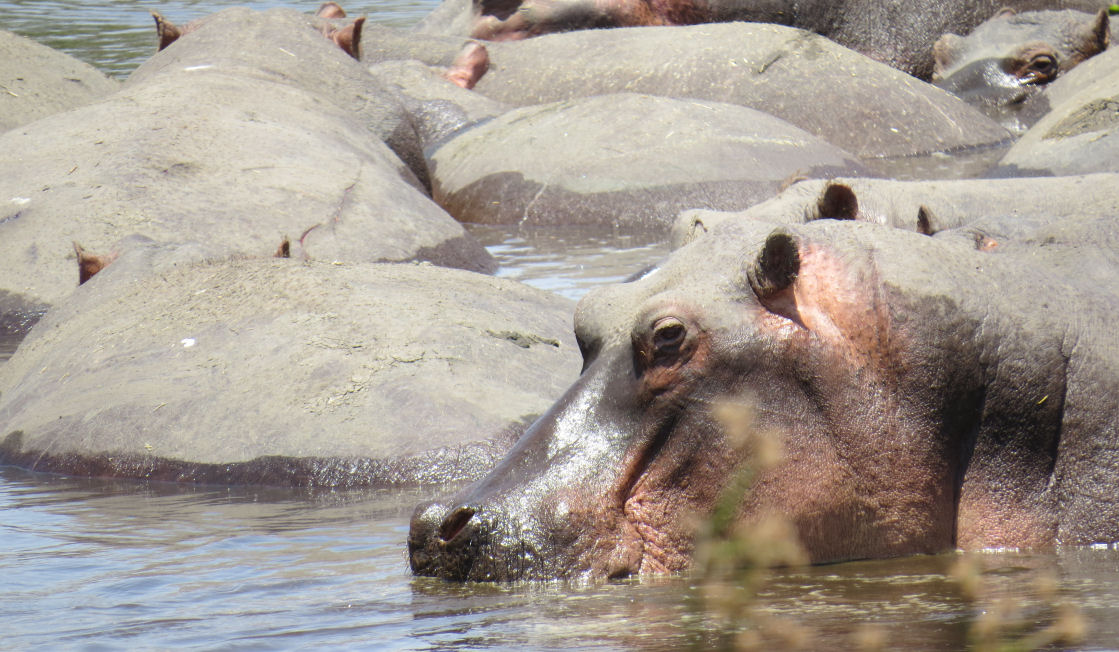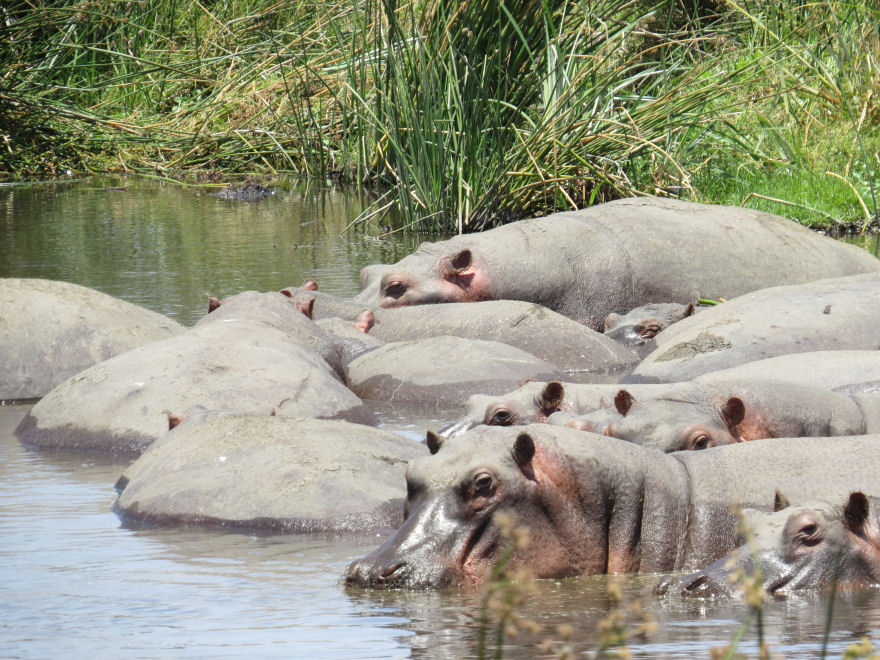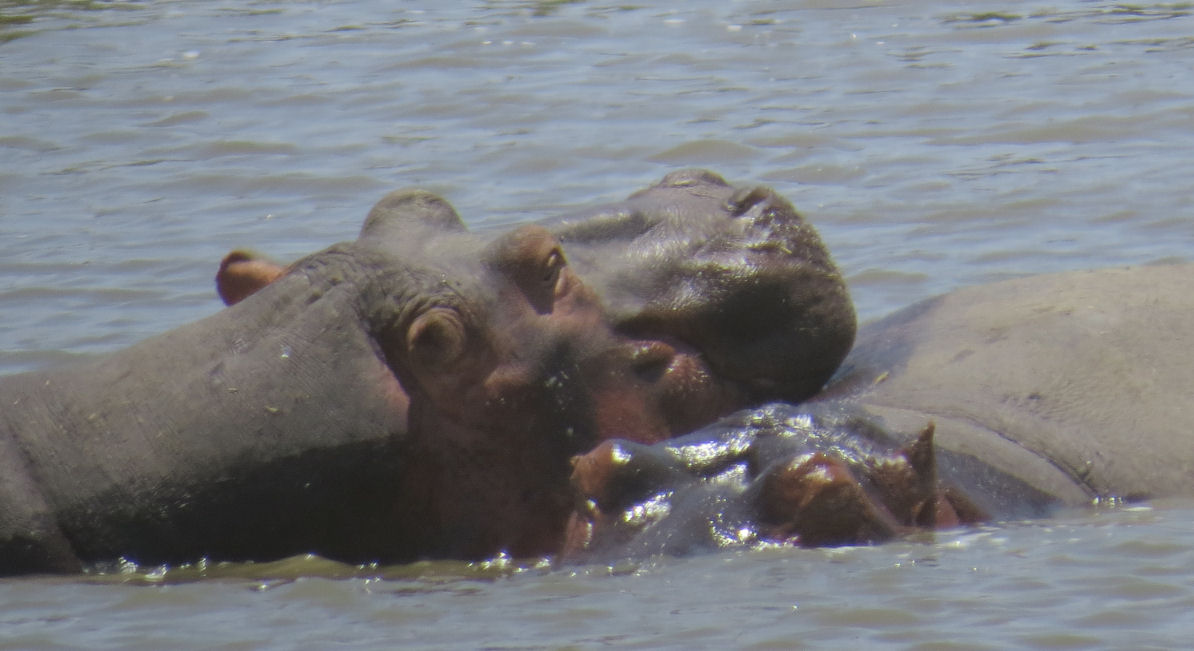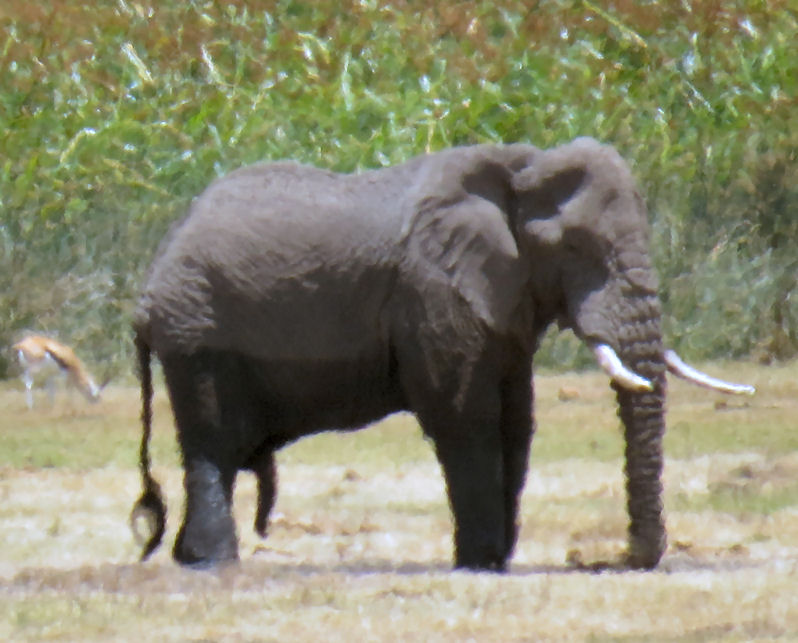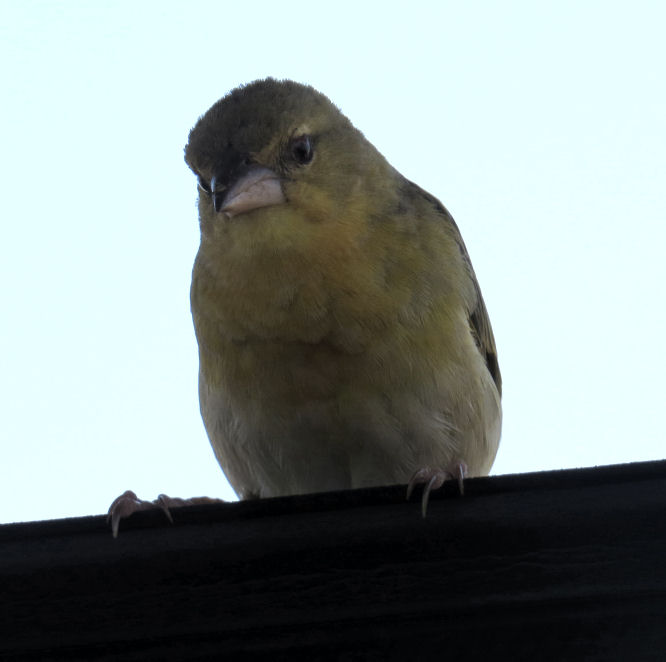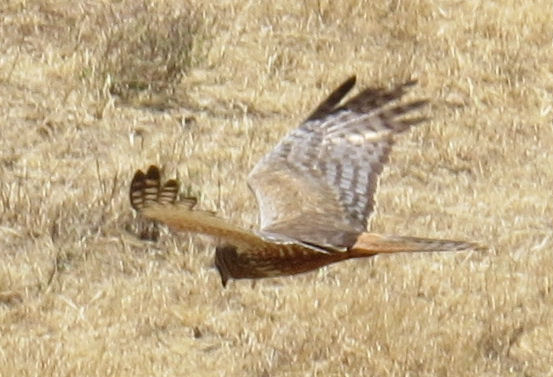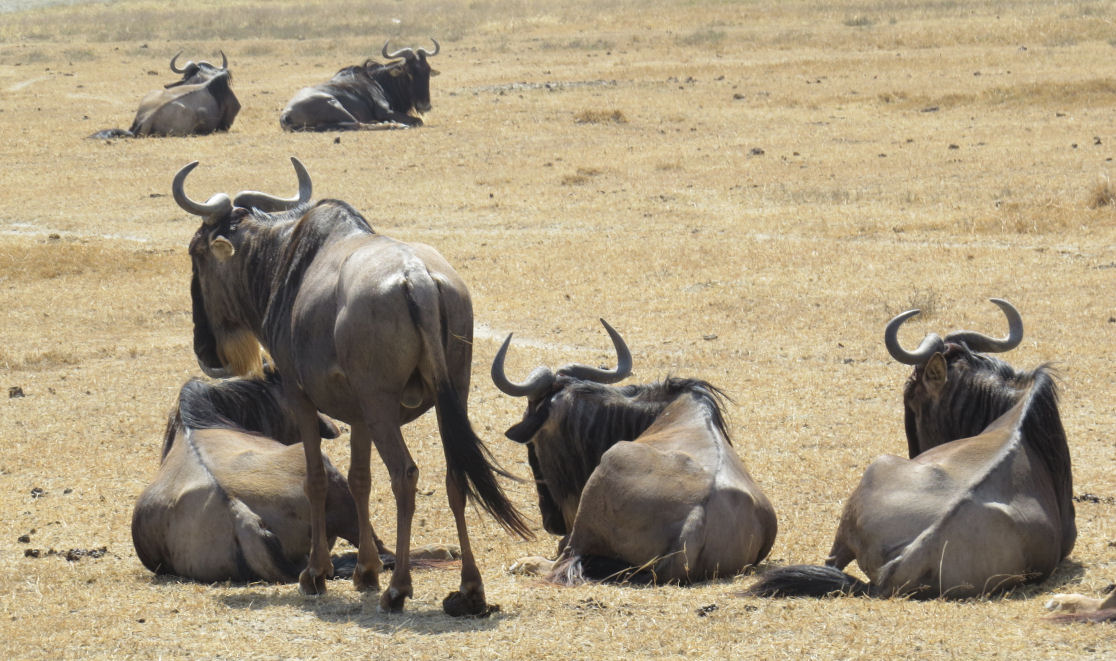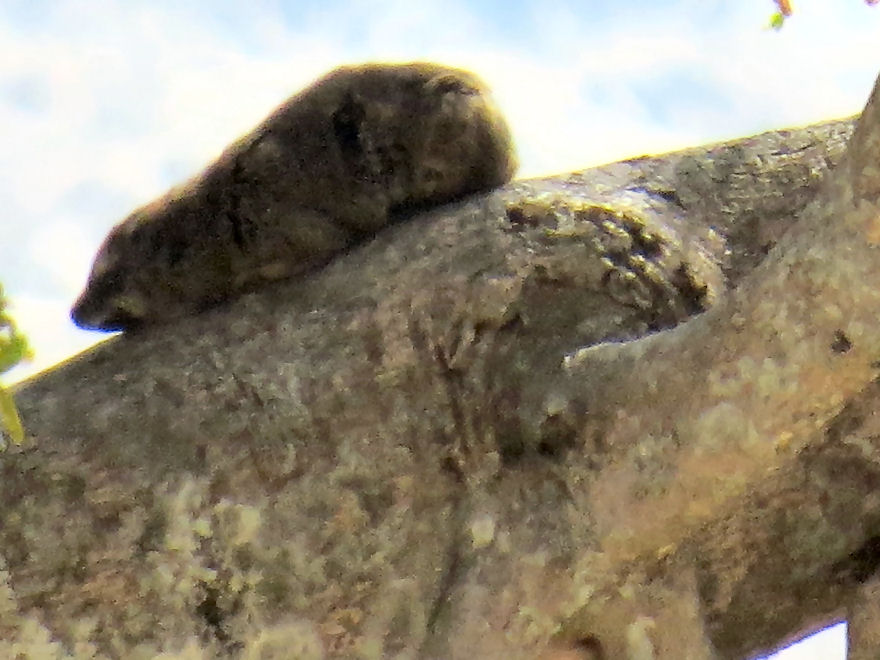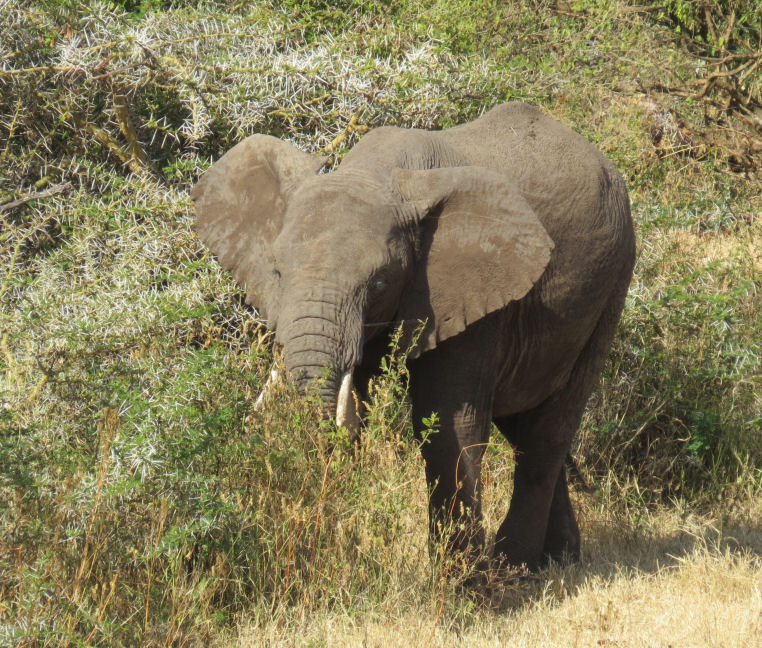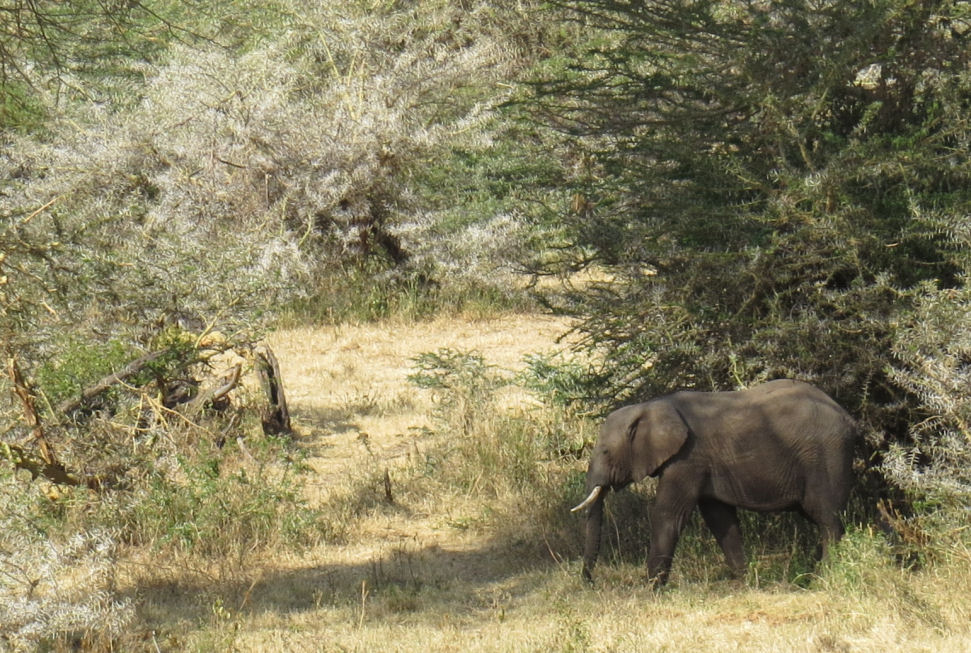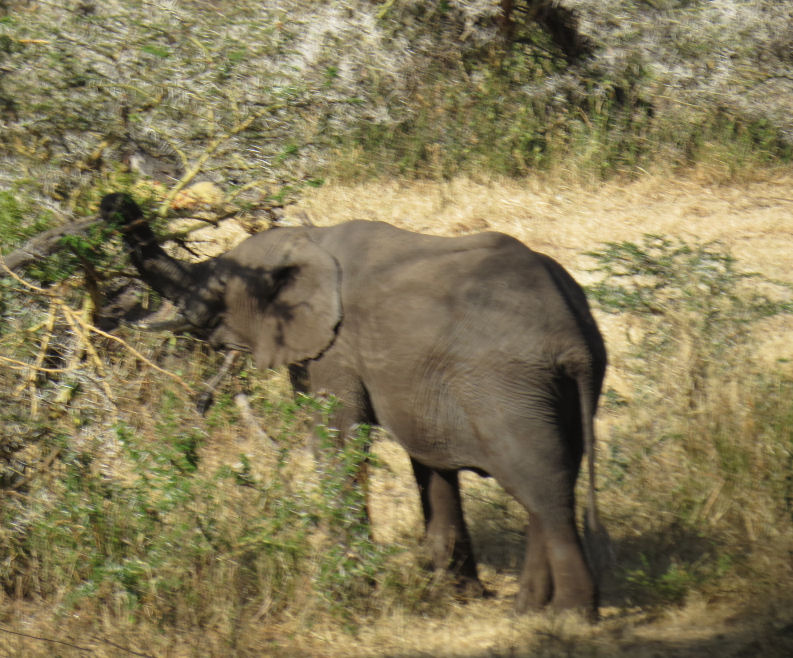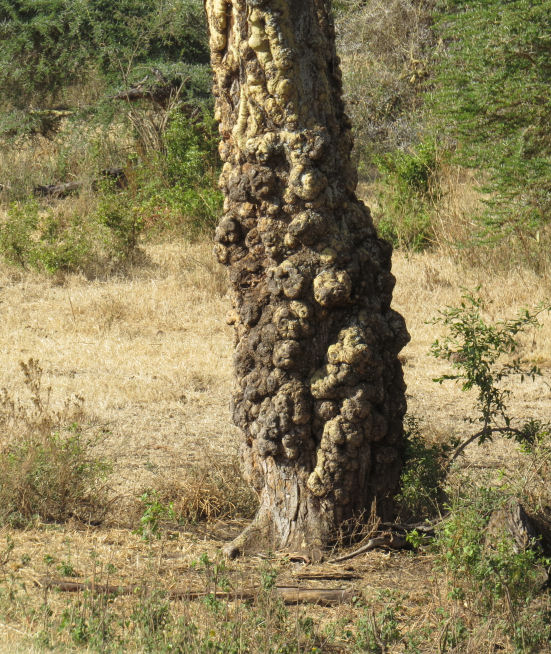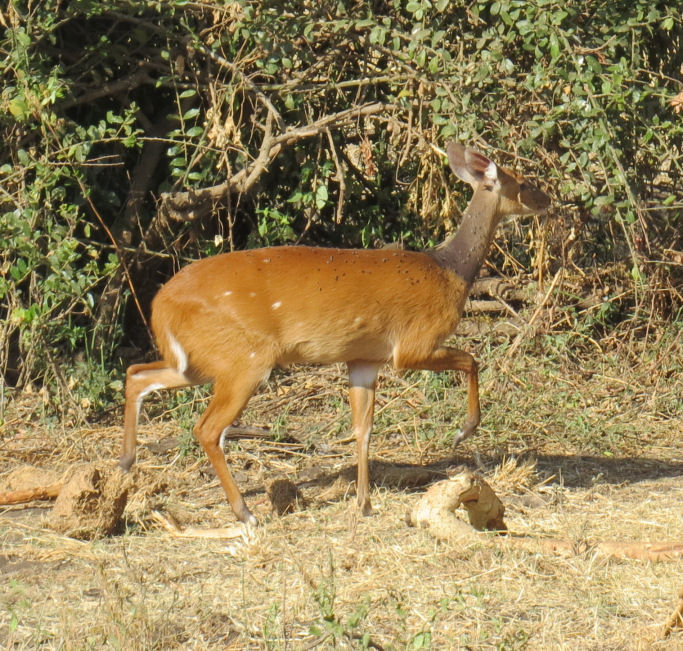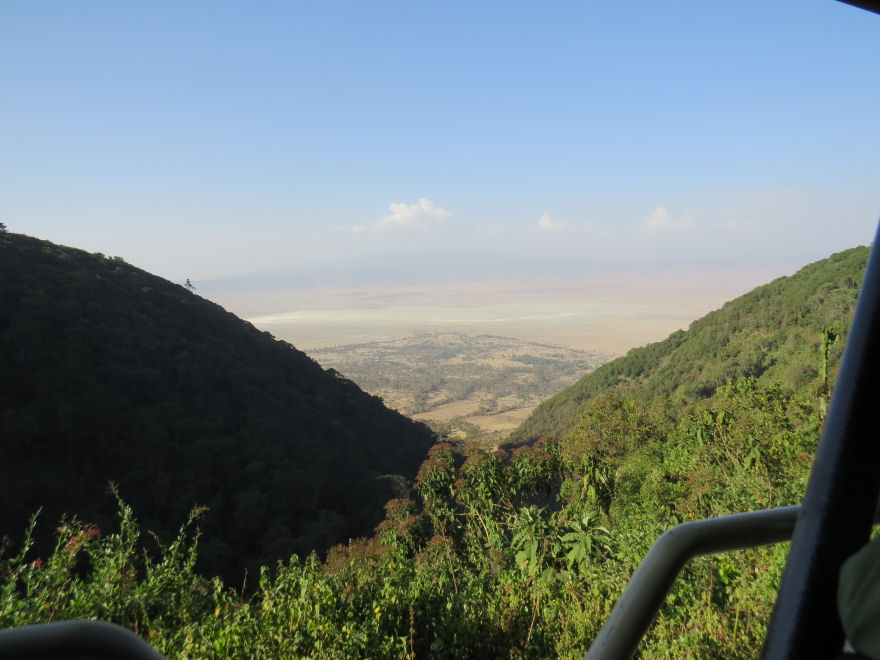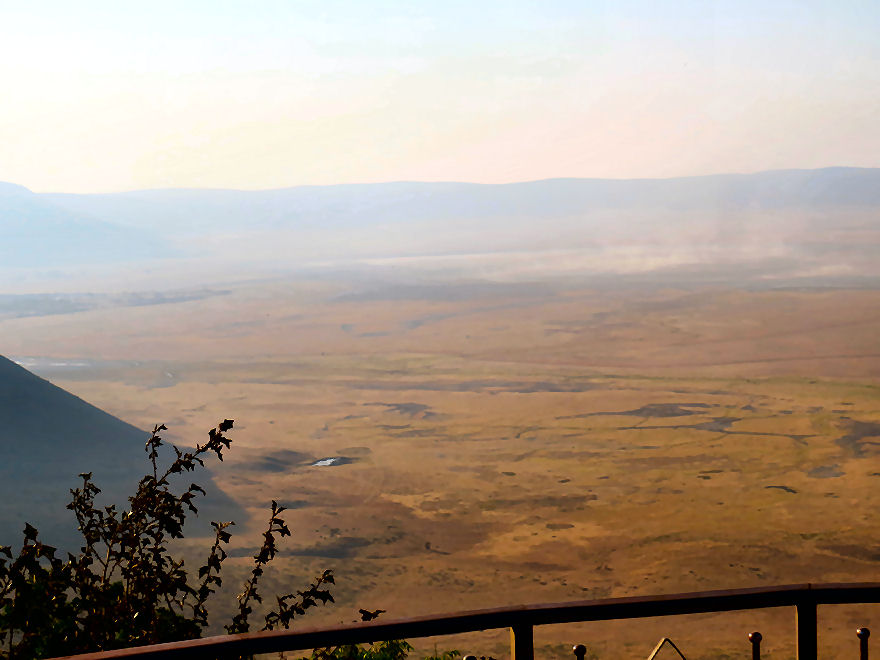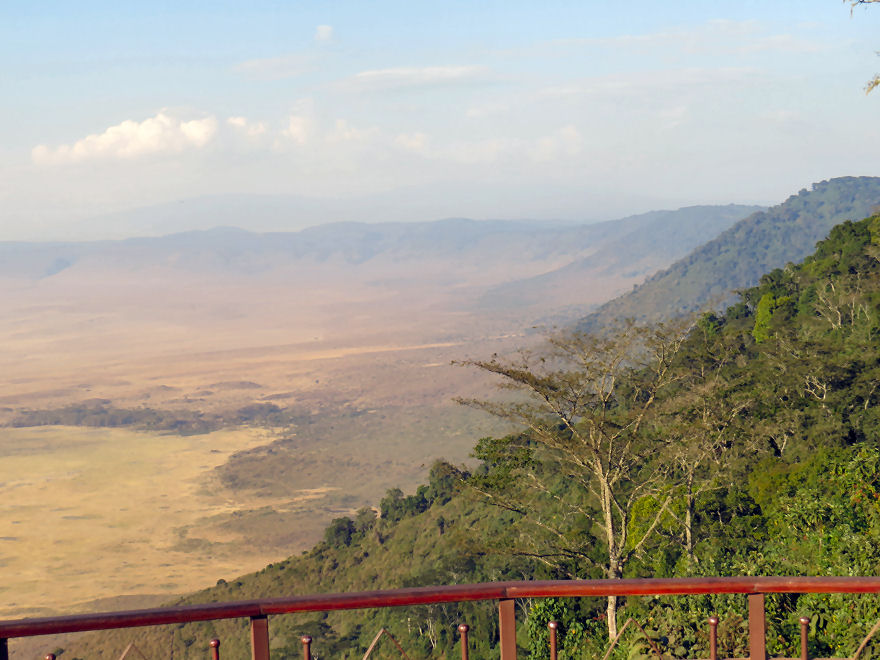Well, this was unexpected. During the night I was up two or three times with bizarre, at least for me, digestive problems. I have always prided myself on having an iron stomach. I have had food poisoning a couple of times, and twice I was memorably sick on trips because of excessive alcohol consumption. However, I can never remember having diarrhea or any other similar problem.
My first thought was that it must have been something that I ate. I had read this sobering sentence in Lonely Planet's Tanzania book: "It is not inevitable that you'll get diarrhoea when travelling in Tanzania, but it is likely." On the other hand, I had been pretty careful. I did not eat or drink anything that everyone else avoided. I drank only bottled water, coffee, and beer. Sue has often been susceptible to problems like these, but I have always consumed whatever was put in front of me. I have never been known to suffer for it.
I adopted the strategy of confining my diet to things that seemed unlikely to give my system trouble. I really did not know what they might be, but at breakfast at least it seemed reasonable to concentrate on bread and cereal products. I also decided to avoid alcohol for the nonce.

We had asked for a wake-up call, which in Plantation Lodge meant dispatching a staff member to coo "hello" outside of your window until you responded. Betty was awakened this way, but she reasonably assumed that it was not her responsibility to rouse Sue and me.
So, Sue and I arrived at breakfast a little late. The selection was similar to Onsea House's, except that there was no problem in finding everything. We were enjoying our repast when one of the staff members came to our table to report that Jeff was locked in the Farmhouse. Sue and I had assumed that no one was in the right side, and I had locked the main door behind us.
I don't know how Jeff made his plight known to the staff, but he was understandably upset when he got to breakfast. He blamed the Slanetz sisters. I tried to make it clear to him that it was actually my fault.
I gave the binder containing my Thrice manuscript to Tom to read. I did not feel that this was too big of an imposition since he had given me a trilogy by Malcolm Mackay to read before the trip started. I could not stand Mackay's style, but I wanted to know how the plot, which involved gangsters in Glasgow, got resolved.
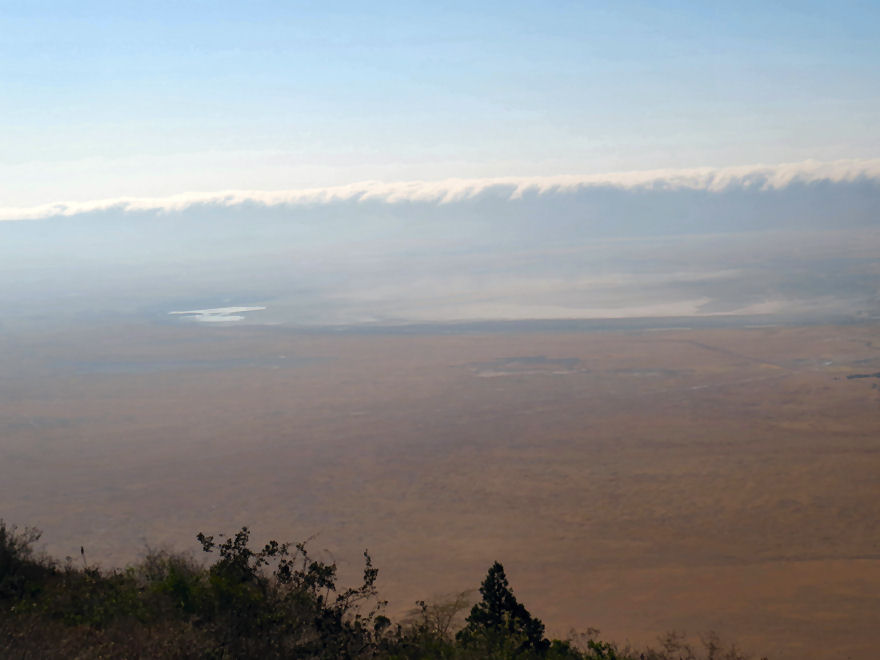
After I had finished my breakfast, I repaired back to our room. I wanted to be near a bathroom in case my digestive track was not happy with breakfast. I was about halfway to the room when I remembered that Sue had locked our side of the Farmhouse, and she still had the key.
I returned to the restaurant and retrieved the key. I made it to the room without any problem. I still felt funny, however.
On the way back I counted seven cats sitting outside of the kitchen area.
After we had brushed our teeth and were almost ready to walk down to the parking lot to meet up with Jackson and our Land Cruiser, Sue accused me of stealing her hat. She had one in her hand, and she showed it to me while proclaiming that this was definitely not hers. On the other hand, it was much too small for my head, and it did not look much like my hat either. Eventually she realized that it was merely inside-out. When she reversed it, it looked and felt fine.
I need to describe the vehicles that were used for the game drives. Most of the ones that we saw were Toyota Land Cruisers, but there were still some Land Rovers as well. They all featured four-wheel drive. The ones that we used had three rows of seats, but vehicles with only two rows were also quite commone. Each row was a little higher than the one in front of it. Some, like the one that Jackson drove, feature roofs that could be popped up a foot or more. If it were raining lightly, these would probably be the best. Others had canvas tops that could be removed. These would certainly be prefarable for birding, but the midday sun was always quite hot in Tanzania.
All of the safari vehicles were extremely well appointed. There was always a cooler full of ice and cold beverages. The coolers always contained plenty of bottled water, but they also usually had soda, beer, and even wine. Sometimes there were small packs of tissue available to the guests. This was important; westerners were accustomed to a much greater availablity of disposable paper poducts than was prevalent in the third world.
All of the guides also carried handbooks to help identify birds and other animals. Betty, who had shopped thoroughly for such products, was quite envious of the ones carried by the guides. The cars associated with camps also had radios, and the guides engaged in frequent conversations with one another, with the camp, and, perhaps with their friends.
Jackson told us about the Ngorongoro Crater, which is really a caldera. The mountains on the western edge of the rift valley were extremely active volcanoes millions of years ago. Ngorongoro may have been as tall as Kilimanjaro before the top part collapsed and formed the large, fertile, bowl-shaped area that it is today.
Ngorongoro Crater is not a National Park, it is a Conservation Area. This distinction allows some members of the Maasai tribe to live within its boundaries. In the nineteenth century the Maasai discovered this area, which had been inhabited for a very long time. The Maasai drove out the two tribes who were living there and claimed the territory. Jackson told us that "Ngorongoro" is the Maasai term for "soup bowl,"[1] which the crater definitely resembles.
Jackson informed us that the crater filled with mist every morning. The route into the crater was pretty much impassable until the sun burns it off, which generally occurred at about 10 a.m. The edge of the crater was about 2300 meters high; the floor was about 600 meters lower. We would be descending a long way on a steep road.[2]
On the drive to Ngorongoro we saw a variable sunbird. I did not get a photo of this stunning specimen.
We passed signs for some camps that were located right in the crater. One of my books noted that the people who stay in these camps would be able to spend a longer day on their game drive. Whoever wrote the article must not have known about the mist in the crater.
When our car reached the rim we were treated to a startling view of the fog bank on the other side of the crater. Unfortunately the mist in between made it easier to see than to photograph.
We stopped for a bathroom break. I seemed to be all right, but I still felt funny. This was when I finally noticed that Sue, for the first time that I could remember, was wearing a pantsuit. She told me that she had been given this outfit by Jan Rosow, whom she referred to as her "big sister."
Jackson showed us substantial holes in the ground that, he averred, had been made by elephants. Evidently they felt the need to supplement their diets with some minerals. The holes were on the other side of the car; I did not take a photo.
The first major animal that we viewed was a cape buffalo. Shortly thereafter we saw a group of giraffes. We spent quite a while trying to photograph them, but they were pretty far away, and they remained partially concealed by vegetation.[3]
When we got to the steepest part of the descent, Jackson engaged the four-wheel drive.
A group of warthogs soon gained our attention. We saw many of them throughout the trip, but these were by far the most sociable and photogenic.
We spotted a couple of hyenas in the distance. My photos of them are not great, but they came out better than I expected. We saw only a handful of hyenas on the trip.
A group of wildebeests crossed the road in front of us. The wildebeests of Ngorongoro do not participate in the great migration. They are just as picky about what grasses they eat as their nomadic cousins, but they can find enough of their favorite grasses all year round inside the crater.
A sighting of a great crowned crane was followed by identification of some Thomson's gazelles and some Grant's gazelles. The former, nicknamed "Tommies," are considerably smaller than the latter.
Perhaps the highlight of our visit to Ngorongoro occurred next. A male ostrich put on an elaborate display of his plumage for a female, who never showed much interest. After his dance, he made his moved toward her. She move away, and eventually he took off after her in hot pursuit. I am not sure how this episode ended. I am not sure that I truly want to know.
As he maneuvered the Land Cruiser along the dirt road, Jackson somehow spotted a minuscule patch of tawny yellow off to the right, stopped, picked up his binoculars, and directed our attention to a pair of lions. We spent a few minutes zooming in on them. This was our first encounter with big cats on the tour. In a way it was good that we had already spent a day on safari. It made it seem like a special occasion.
We then saw a kori bustard, one of the heaviest birds that can still get off the ground. We had seen one in the distance previously, but this one was relatively easy to photograph.
The highlight of the afternoon was definitely a pair of lions that tied up traffic. They had quite an entertaining scam going. They walked down the road knowing that tourists in Land Rovers and Land Cruisers would gather to look at them. They then plopped down in the shade of one of the vehicles. They even leaned up against the tire.

My notes say that we saw some northern anteater-chats, a warthog, and a Fischer's sparrow-lark. None of them made a lasting impression on me.
Just before lunch we watched five buffaloes at the hippo pool. Jackson identified them as old males. Near them was a solitary elephant, perhaps the most dangerous sight in all of Africa. The female elephants are very sociable; if you see one, she will almost always be in a family group. If you encounter a single elephant, it will almost always be a male, and they are always dangerous.
This one, however, had his trunk all the way down on the ground, and he was completely motionless. Jackson explained that he was sleeping. In Africa the admonition to "Let a sleeping dog lie" was translated to "Let a sleeping bull elephant stand."
At the picnic site, which was on one side of the hippo pool, we first stopped at the restroom. I was not shocked to discover that there was no toilet paper. Fortunately, I had brought paper napkins and tissues with me.
We ate lunch in the Land Cruiser. At Lake Manyara we had the picnic site all to ourselves, and we dined on picnic tables. I counted thirty-five other safari vehicles and one bus there. It was very windy.
Some cheeky birds flew right up to the popped-up roof of our car to beg for crumbs. We took photos of them, but otherwise we ignored them.
We passed an African marsh harrier. What an amazing bird! It can easily hover in place a few feet off of the ground. A hummingbird can also hover, but these birds are big. For once it was not insuperably difficult to photograph a bird in flight.
After lunch we saw a rather large herd of wildebeests. Since they are the main attraction of our next stop in the Serengeti, I will refrain from writing more about them here.
Somehow Sue noticed something perhaps one hundred feet to our left. It was completely motionless, and to the naked eye it appeared to be nothing more than a bump on a branch. Jackson identified it as a tree hyrax. Hyraxes look like rodents, but they are actually more closely related to elephants.
I recorded in my notebook that we saw a white-backed vulture, but I do not remember it, and I did not photograph it.
Our last adventure inside the crater was a drive through the Lerai Forest. The rest of the crater was a dry savanna, but with no warning the road we were traversing suddenly encountered rather thick vegetation on both sides. The effect was quite startling.
Jackson showed us a strangler fig that was in the last stages of claiming its victim. Other trees were covered with scars where elephants had feasted on the bark. There were also plenty of thorn trees with natural protection to keep out grazers. This defense did not work against elephants, which ate the trees thorns and all.
My notes include the statement that we saw some Hildebrandt's francolins. I took some photos of them, but they did not make the cut for the journal. After a few days on safari I gave up on trying to keep track of all of the birds. Fortunately, Betty, who brought a hand-held recorder, persisted. Her list is included at the bottom of Day 14.
We saw a bushbuck that was absolutely covered in flies.
Our primary objective in driving through the forest was to catch sight of a leopard. Betty had read that there were leopards in the forest. I had asked a few people back in New England if we would be able to see a leopard. No one thought that we would. My desire to see one of these magnificent cats was instilled by a Far Side cartoon that I hung on the wall in my office. It shows a leopard in a tree with a number of cameras slung over branches, souvenirs of its successful pursuit of tourists who had abandoned their vehicles for a better shot.
Alas, no leopard sightings in Ngorongoro. We stayed in the Land Cruiser throughout.
The road up from the crater floor was a fairly recent development. It was paved with bricks, which were laid by hand. On the way we saw some more lions.
As before, it got pretty hot during the day, but the breeze kept it comfortable even for Sue. It cooled down rapidly when the sun set.
Jackson provided us with a feedback form and an envelope, which was a civilized way to collect the tip. I let Betty fill out the form. She asked me if there was anything I wanted to include in the comments. I simply said, "More leopards, please." Betty also wanted to write up a critique of us tourists to give to Jackson. I offered the opinion that because they might take the official critique seriously, it should be on a separate sheet of paper.
Back at the Plantation Lodge we assembled for another elegant supper. This time the entrée was chicken. I eschewed the accompanying salad because I had read somewhere that vegetables washed in tap water could cause digestive problems. Nevertheless, I enjoyed the meal.
Unfortunately, my system had the same reaction as before. I decided to start taking the Cipro that the travel clinic had prescribed for us.
[1] Wikipedia claims that the Maasai phrase "El-Nkoronkoro" means "gift of life." I bet that Molil, our guide in Katavi, knows which is correct.
[2] We later learned that there is a separate road used to exit the crater.
[3] It is funny how your standards changed. In Katavi we would not even have stopped for these giraffes.
[4] This form bothers me a little. This is clearly a Greek word, and the plural of Greek nouns that end in -os is -oi. The only other English word of Greek origin ending in -os that I can think of are "kudos," "ethos," "logos," and the like, which are never used in the plural.
[5] The so-called Big Five are lions, elephants, cape buffalo, rhinoceroses, and leopards. The first three are relatively abundant in the parks that we visited. These were the only rhinos that we saw.
